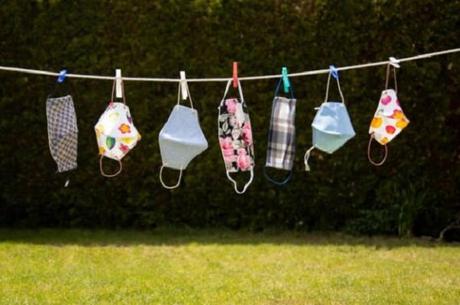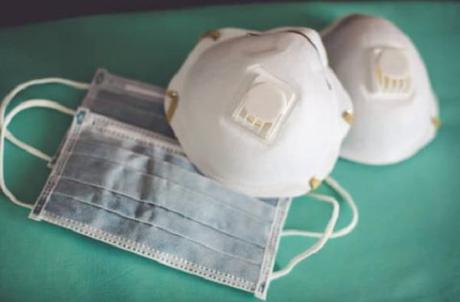Americans are constantly reminded to wear homemade masks in public spaces. But how much protection do cloth face masks offer? When do you need to wear your mask? Here are 5 things you need to know about cloth face masks.
COVID-19 is here to stay- at least for now. We should not lower our guards as we are not yet out of the woods. It is important that we continue observing the CDC COVID-19 guidelines. This will help reduce the spread of the virus. Chief among the guidelines is the wearing of face masks whenever in a public space where social distancing is challenging. The other guidelines include a call to avoid large crowds, maintain social distance, and observe high hygiene standards.
When do you need to wear your mask?
Wearing a mask doesn't replace social distancing, it supplements it. The CDC made an official recommendation in August that everyone should wear a homemade cloth face mask in a public space where social distance is hard to maintain like in the transport sector and in retail stores. Medical masks such as the N95 respirators are to be reserved for frontline healthcare workers and other medical responders. You can forego the mask in situations where you expect there will be enough space between you and the next person. Nonetheless, it is always a good idea to always have your mask with you - just in case.
Unfortunately, wearing masks seems to be creating a false sense of security among many Americans. It does not mean that you throw caution to the wind just because you are wearing a mask. You should continue washing your hands with soap and water at least five times a day.
When should you not wear a mask?
The CDC has identified situations where wearing a mask may not be possible. In such situations wearing a mask may introduce some serious safety concerns. Should you find yourself in such a situation, you should consider adaptations and alternatives.

Such circumstances include:
- When you are engaged in any activity that may make the mask become wet such as swimming. If you must engage in such activities, social distancing is the only option you have.
- When you are engaged in an intense physical activity like running. Wearing a mask while running may make breathing difficult.
- If you work in an environment where wearing a mask can increase the risk of heat-related illnesses. You should consult an occupational safety expert on the appropriate mask for such a setting.
- If you have sensory sensitivities or any other mental health challenge. Consult your healthcare provider first before wearing a mask.
How should your mask fit?
A cloth face mask is only effective when worn properly. It is also important to remember that masks should not be worn by people who have breathing difficulties or are unable to remove the mask without assistance. Children under the age of 2 should not wear masks, this is according to the CDC.
A properly fitting mask:
- Feels snug and comfortable, without visible gaps between the fabric and your face
- Covers both your nose and mouth
- Allows you to breathe and talk easily
- Is properly secured under your chin
How do Cloth Face Masks compare to N95 respirators and Surgical Masks?
Surgical masks are designed to protect others from you. They cover your nose, mouth, and chin to prevent the transmission of contaminated respiratory secretions released when you talk, sneeze, or cough. Here in the US, testing, approval, and regulation of surgical masks are done by the US Food and Drug Administration. The use and making of cloth face masks are not regulated.

The US Food and Drug Administration recommends that surgical masks be used by health care workers, people who show COVID-19 symptoms, and those taking care of suspected or confirmed COVID-19 patients. Cloth masks are worn by people who show no COVID-19 symptoms. You are advised to always have your cloth face mask on whenever in a public setting.
N95 masks are high filtration efficiency respirators that can filter both small and large particles and liquid droplets. They offer more protection from contaminated airborne particles than both surgical and cloth masks. The respirator's strands are electrostatic and haphazardly arranged making it hard for particulate matter to enter.
Compared to cloth face masks, N95 respirators have a very close facial fit. This explains why they have a very high fluid resistance at 95%. According to the guidelines provided by the CDC on the use of N95 respirators, they are not for use by the general. Because of their proven effectiveness against the SARS-CoV-2 virus, the CDC recommends that they be reserved for frontline healthcare workers.
How to choose the best cloth face mask
"Any mask is better than no mask" This is the new saying in town. Since the design and making of cloth face masks is not regulated, almost every vendor in the street is selling cloth face masks. A well-designed cloth face mask prevents person-to-person viral transmission.
There are many ways to define a good cloth face mask. The Key is that the cloth face mask has multiple layers and a good seal. The best cloth face mask is the one that feels and fits well. It should also offer protection against contaminated airborne particles.
How well a mask works is influenced by a number of factors. First is the size of your head and your facial features. Another important factor is your behavior and the environment in which you operate. Because of these factors, it is difficult to point out the most effective mask. It all depends on your behavior and the situation in which you find yourself in.
Shopping for a cloth face mask requires compromise. Looking for a one-fits-all option is an exercise in futility. You have to strike a balance between fit and comfort and the protection that the mask offers.
A growing number of experts prefer multiple layer masks over single layer masks. According to this Lancet study, multi-layer masks offer more protection than single layer masks. The study recommends masks with at least three layers. The outer layer of the mask should be water-resistant, the middle layer non-woven, and the inner layer next to the skin comfortable.
This April study found out that the best material for making cloth face masks is one that is tightly woven. In the study, involving droplets smaller than 0.3 microns at low flow, two-ply 80-thread-count quilting cotton showed far less filtration efficiency than a two-ply 600-thread-count pillowcase-like material. Unfortunately, information about the material thread-count is rarely provided by mask makers. You just have to contend with their word on how tightly-woven the material used is. The best way to confirm the effectiveness of a cloth face mask is by holding it up to the light. If there are many visible openings on the fabric structure then the material has a low filtration efficiency.

